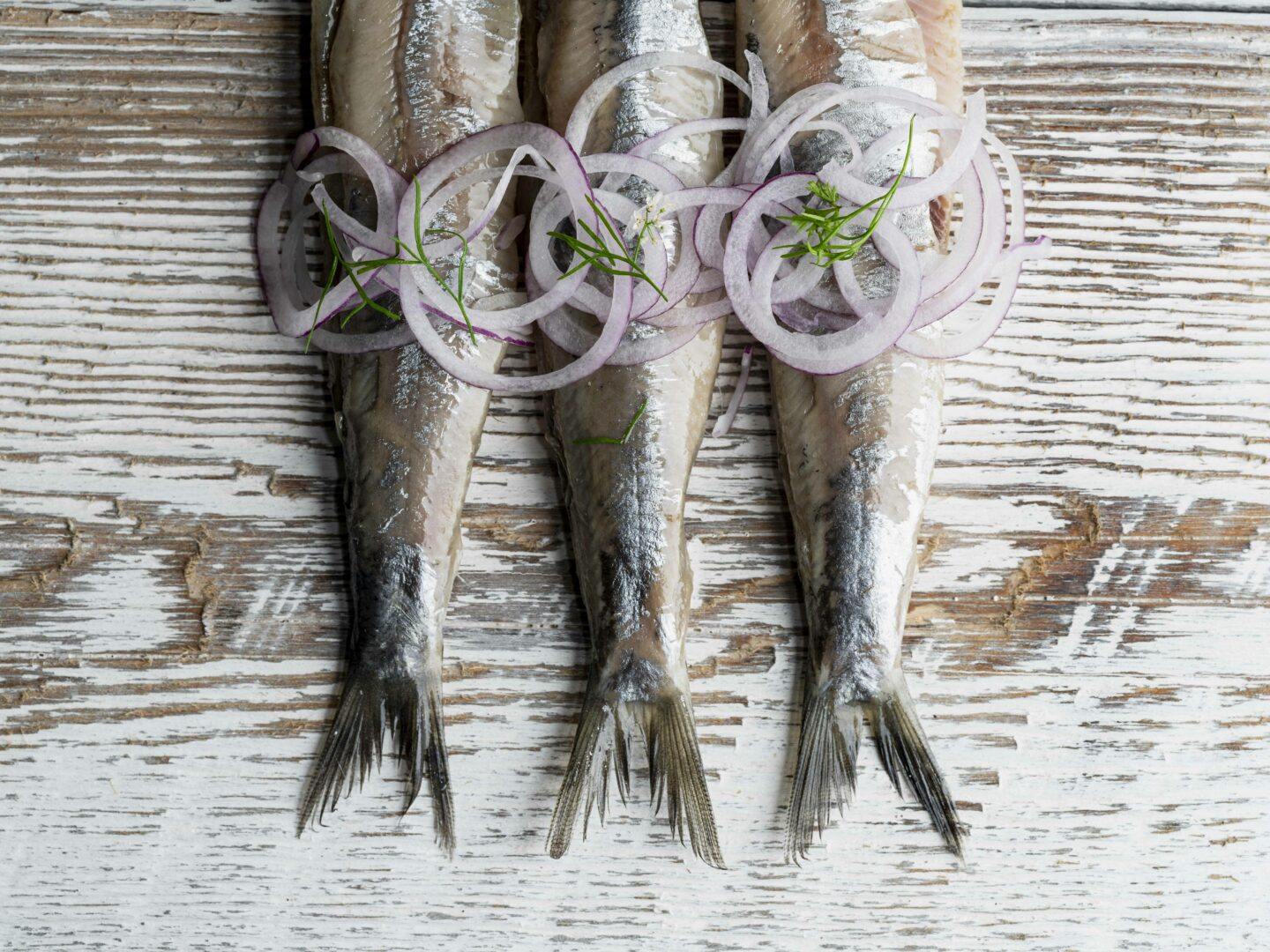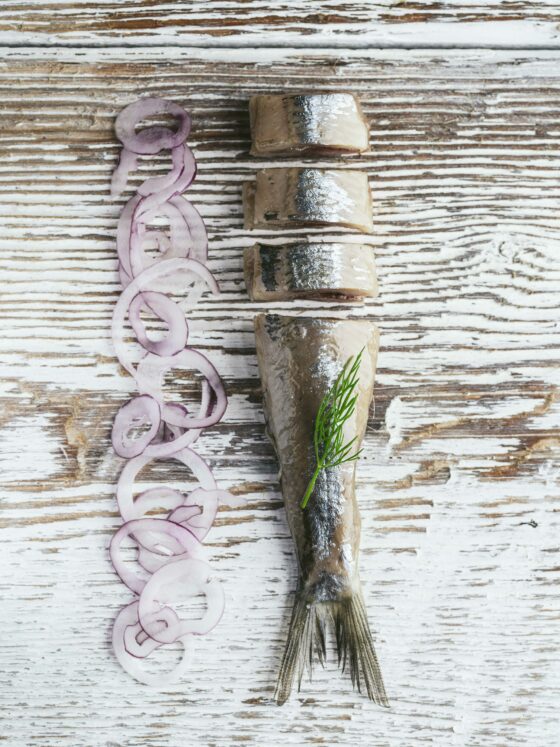Maatjes: I can never get enough of the maatjes herring
In June and July maatjes are in season. This is when the deliciously tender herrings are at their best for about six weeks. But how does a herring actually become a maatje? And what is the difference between Dutch New and Belgian maatjes?

How does a herring become a maatje
The story begins with the reproductive cycle. After the winter months, the herring starts feeding as much as possible. The fish will need the stored fats for reproduction. From mid-May to mid-July, just before spawning, it is at peak fatness. This is also the ideal time to catch the fish between Norway and Scotland. From then on, the herring uses all its stored fat to produce eggs, and by the time spawning season arrives, the fish is exhausted and skinny. By then, maatjes season is over again.
What happens to the caught herrings? Well, they are immediately cured on the ship. The intestines, except for the pancreas, are removed and the fish are placed in a salt brine. During the fermentation process, the herring becomes very tender. The enzymatic action of the pancreas gives the fish that typical taste of a maatje. The herring are then placed in buckets and frozen in order to kill herring worms. Finally, at the fish store, they are filleted. The herring has finally become a maatje. Time to enjoy the delicacy!
Tip #1: Maatjes are at their best without add-ons
When I come home with my maatjes the first day they’re in season, I can’t wait to feast on them. I like to eat them pure, sliced and piled up on my knife. No toothpick, I don't have time for that. That's how impatient I am. As I write, I can taste that creamy, salty flavor. It is as if the tender meat truly melts on my tongue ...
The taste of maatjes is so unique that you really don't want onion with it. That only distracts from the salty juicy flavors.

Tip #2: Eating maatjes makes you happy
The maatjes whit a high fat content, especially the white ones, are the tastiest. Herring, when caught, should have a minimum fat content of 16%, although it sometimes goes up to 25%. The fats consist of unsaturated omega-3 fatty acids. They are fats that positively affect the health of our heart, brain and blood vessels. No wonder I get happy when I eat maatjes. All the more reason to eat another one soon!
Tip #3: Dutch maatjes or Belgian maatjes?
This is a misleading question. Actually, there is no difference at all between Dutch, Belgian or even Norwegian maatjes. It is simply a designation of origin indicating that the herrings have been processed in the correct technical manner in the territory mentioned. Here in Belgium, we rather speak of new maatjes, in the Netherlands of Dutch new.
Did you know that there is a difference from the German ones? They are much larger, tougher and saltier in taste. In Germany the cured herring is called “matje”. They are ideal for use in preparations, such as this German “maatjes” with red beet and apple. (Button)
Tip #4: maatjes, straight up or prepared?
As I said, I am a real fan of the pure maatjes. The enthusiasts just hold them by the tail and put them in their mouths, just like that without shame. No preparation, just the real unique taste.
The first step to preparation? Maatjes served with chopped onions. The flavor of the onion is too overpowering for my taste. Sometimes maatjes are served with chopped samphire. That gives a soft-salty flavor and an interesting, crispy bite.